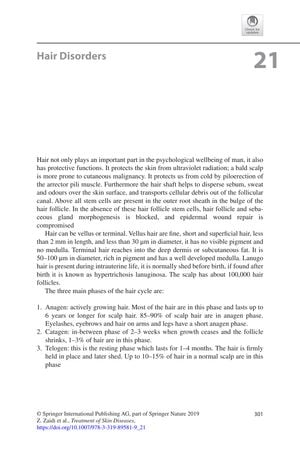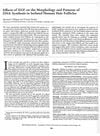Hair Disorders
October 2018
in “
Springer eBooks
”
hirsutism hypertrichosis androgenetic alopecia AGA minoxidil finasteride alopecia areata immunosuppressants alopecia totalis alopecia universalis telogen effluvium anagen effluvium cicatricial alopecia acne keloidalis pseudofolliculitis barbae pityriasis amiantacea hair follicle tumors Rogaine Propecia

TLDR The document concludes that various hair disorders have different treatments, including medication, surgery, and addressing underlying causes.
The document from 2018 provides an overview of various hair disorders, their causes, and treatment options. It explains that hair disorders can have significant psychological and physical effects and outlines the different types of hair and growth cycles. Hirsutism, characterized by excessive hair growth in women, can be treated with cosmetic procedures, medications, and hormone therapy. Hypertrichosis treatments focus on the underlying cause, while androgenetic alopecia (AGA) can be treated with medications like minoxidil and finasteride, or surgery. Alopecia areata, an autoimmune condition, may be treated with immunosuppressants or irritants/immunogens, but often resolves spontaneously. The document also covers treatments for alopecia totalis and universalis, telogen effluvium, anagen effluvium, cicatricial alopecia, acne keloidalis, pseudofolliculitis barbae, structural hair defects, pityriasis amiantacea, and tumors of the hair follicle. It highlights the importance of addressing underlying disorders and avoiding hair damage in the management of hair disorders.
